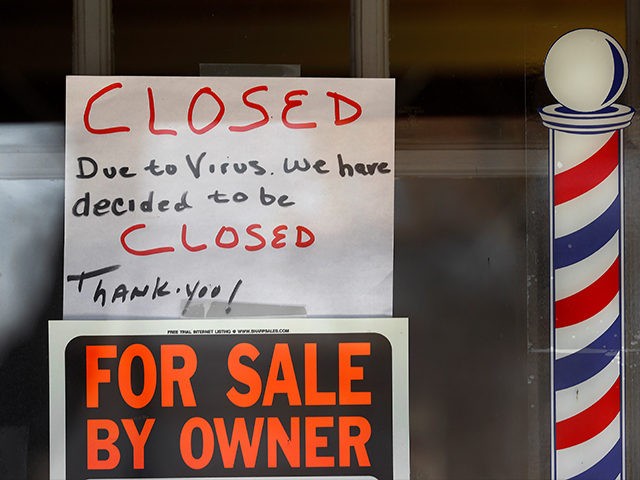
A smaller share of American adults were employed in April than ever before in records going back to 1948.
The employment-population ratio, which measures the share of Americans above the age of 16 who are employed, fell to 51.3 percent, the Department of Labor said Friday. A year ago, it was 60.6 percent.
The previous low was 55 percent in the summer of 1954.
In November 2007, the employment-population ratio was 62.9 percent. This rate fell consistently during the subsequent recession and several months beyond, before stabilizing around 58.5 percent in October 2009. Between October 2009 and March 2014, the ratio remained stubbornly low, fluctuating within 0.3 percentage points of 58.5 percent. It began to climb again in 2014, hitting its post-2008 peak of 61.1 in February of 2020.

The labor force participation rate fell by 2.5 percentage points over the month to 60.2 percent, the lowest rate since January 1973 (when it was 60.0 percent).
The unemployment rate jumped to 14.7 percent in April and the economy shed 20.5 million jobs, according to data released by the Department of Labor on Friday.
Over the past seven weeks, more than 33 million Americans have filed claims for unemployment benefits. But the number of claims has been declining for five consecutive weeks.
The Trump administration successfully pushed Congress to authorize direct payments to U.S. households to support incomes and to raise the amount paid by unemployment benefits by $600 a week, making it possible for some Americans to earn more through losing a job than they made working. The federal government is also backing over $600 billion of loans to small businesses that can be forgiven if those businesses avoid layoffs.
The Fed cuts its interest rate target to a range between 0 and 0.25 percent. In addition, it is in the process of launching a number of new lending facilities aimed at providing liquidity to struggling businesses.
But loans and direct payments can only go so far to offset orders that many businesses close their doors entirely or dramatically reduce the number of customers they serve. The customers were told to stay at home and avoid going out except to purchase essential items. Bars, theaters, and gyms were shuttered in much of the country. Restaurants were required to close dining rooms, remaining open only for take-out and delivery. Manufacturers often had to shut down altogether, including the plants of most automakers in the U.S. Health care establishments found themselves bereft of businesses as patients canceled elective procedures and even regular check-ups.
read more…
www.breitbart.com/economy
